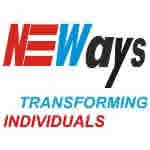|
|
Leading with Purpose: Essential Leadership and Management Skills for Entrepreneurs
NGN 305,000Get 5.00% off
|
Venue: Lagos
Other Dates
| Venue | Date | Fee | |
|---|---|---|---|
| Lagos, Lagos State, Nigeria | 03 - 06 Feb, 2026 | NGN305000 | |
| Lagos, Lagos State, Nigeria | 07 - 10 Apr, 2026 | NGN305000 | |
| Lagos, Lagos State, Nigeria | 08 - 11 Sep, 2026 | NGN305000 | |
| Lagos, Lagos State, Nigeria | 01 - 04 Dec, 2026 | NGN305000 |
Effective leadership and management are crucial for the success of any entrepreneurial venture. In this workshop, you will learn the essential skills and strategies necessary to lead and manage your business with purpose and vision. You will explore key topics such as leadership styles, team building, communication, decision-making, and strategic planning.
Course Outline:
Introduction to Leadership and Management
- Definition of leadership and management
- The Role of Leadership in Entrepreneurship
- Key leadership styles and their benefits and Drawbacks
Team Building and Communication
- How to build an effective team
- Communication Strategies for Leaders
- Giving and receiving feedback
Decision-Making and Problem-Solving
- How to make effective decisions
- Problem-solving techniques
- Risk management and contingency planning
Strategic Planning
- Creating a vision and mission for your business
- Developing a business strategy
- Goal setting and performance metrics
Leading with Purpose
- Developing a personal leadership philosophy
- Identifying and leveraging your strengths as a leader
- Creating a culture of purpose and vision in your organization
Action Planning
- Applying your learning to your business
- Creating an action plan for continued growth and development as a leader
This workshop is ideal for entrepreneurs who want to improve their leadership and management skills and take their businesses to the next level. By the end of this workshop, you will have a clear understanding of what it takes to lead with purpose and make a positive impact in your organization.
Course Booking
Please use the “book now” or “inquire” buttons on this page to either book your space or make further enquiries.
| Lagos | Jul 08 - 11 Jul, 2025 |
| Lagos, Lagos State, Nigeria | 03 - 06 Feb, 2026 |
| Lagos, Lagos State, Nigeria | 07 - 10 Apr, 2026 |
| Lagos, Lagos State, Nigeria | 08 - 11 Sep, 2026 |
| Lagos, Lagos State, Nigeria | 01 - 04 Dec, 2026 |
| NGN 305,000.00 | (The program fees covers tuition, Course Materials, Tea/Coffee and Break, Lunch, Bag, Certificate of participation and administration) |
Dr Chris Egbu +2348023194131
Related Courses
 Techniques for Setting up Cost Savings Procurement Department Course
Techniques for Setting up Cost Savings Procurement Department Course
3 days, 24 - 26 Mar, 2026
Newways Consulting






